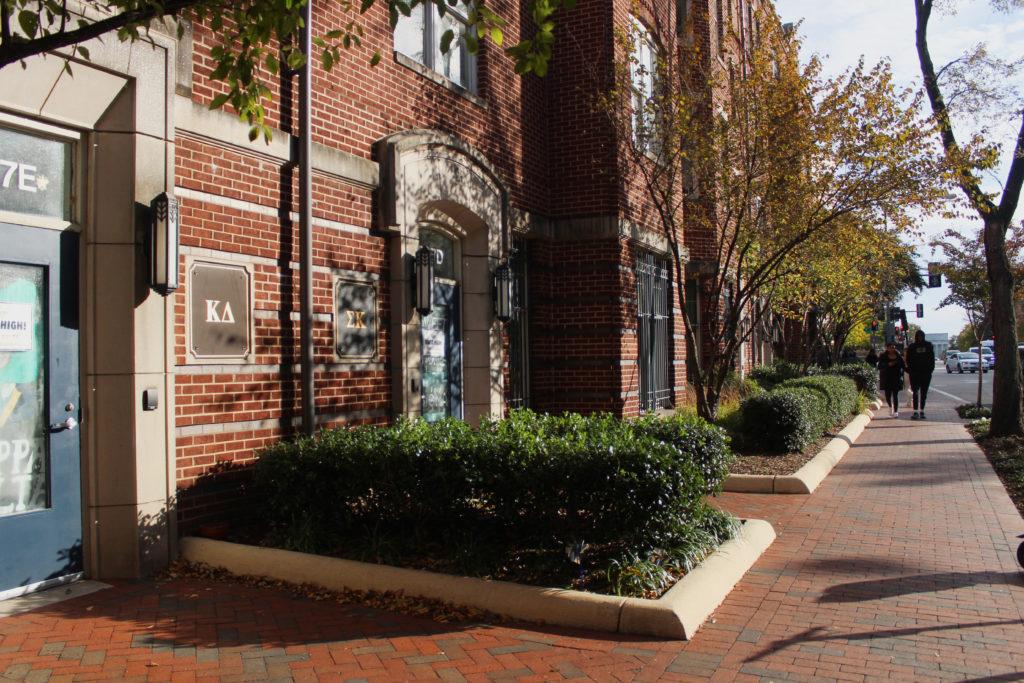Experts in public health said recent reports of apparent mold on campus could have been the result of administrative oversight as buildings sat empty while classes were held virtually last year.
Multiple students have reported symptoms similar to those of a cold and the flu, respiratory infections, continuous coughing and allergies, which experts said are typically associated with exposure to mold, which could have grown in residence halls that sat empty throughout the pandemic without adequate ventilation. Nearly 200 students were evacuated from Townhouse Row and relocated to local hotels earlier this month after officials detected what they later confirmed as suspected mold.
Scott Burnotes, the vice president for safety and facilities, said in an interview about ongoing HVAC system updates prior to the evacuation that all campus buildings were “safe to occupy” and aligned with expert COVID-19 reopening guidelines. Guidelines outlined by the American Society of Heating, Refrigerating and Air-Conditioning Engineers recommend that universities inspect their unoccupied buildings before reopening to identify potential mold growth.
Anindya Chanda – the founder and CEO of Mycologics, LLC, a consulting firm that addresses health issues associated with air quality and mold – said moisture build-up, which leads to mold outbreaks, is often the result of maintenance “oversight” in unoccupied residence halls.
“If the mold damage has affected an entire building or multiple buildings, I would be concerned about an oversight of the facilities that maintain the buildings,” Chanda said in an email. “Questions such as whether the humidity levels are monitored/managed, whether HVAC filters were changed in a timely manner and why was the air quality not checked before letting people stay in those dorms would arise.”
Some students said in interviews earlier this month that they received a delayed response to their FixIt requests while others hadn’t heard back from facilities staff to address what appeared to be mold in their rooms.
Chanda said mold infestations are the result of high moisture concentrations on different surfaces like walls, vents and furniture, where mold can feed and grow. He said residence halls, which largely sat empty and received little ventilation through the pandemic, provided a “closed environment” for mold to grow.
He added that mold sickness can weaken the immune system against other viruses, like the coronavirus. He said students exposed to mold should make sure they are following coronavirus safety guidelines like indoor mask mandates because with a weakened immune system, they may experience a more severe coronavirus case.
“The folks who have been affected with these molds, they should make sure that they’ve been protected from the coronavirus pandemic,” he said. “The reason is, once you are infected, health-wise, with mold, you should consider yourself as immune weakened – your immunity has been challenged and weakened.”
More than 70 students in residence halls across campus have said they found what appeared to be mold growth in their rooms in recent weeks. Coronavirus cases also rose last week, with 91 people testing positive for the virus.
The Faculty Senate passed a resolution last week stating that officials spread “misinformation” about their progress on HVAC system updates – which included the installation of air filters to improve air circulation – with a statement to the GW community in June indicating that the updates were complete. Officials said in a later statement that those updates would be completed two weeks after the start of the semester.
Dori Germolec, an immunology discipline leader at the National Institute of Environmental Health Sciences, said bathrooms, sinks, walls and air conditioning vents are common locations for mold growth. She said officials can prevent mold growth if they consistently clean surfaces with bleach or other disinfectants.
“In normal, healthy individuals it’s really less of a problem, but as the level of spores in an indoor environment increases, and in people with predisposition to respiratory disease or other active respiratory conditions, then you may have a problem,” she said.
Large mold outbreaks can often be demonstrated as spots ranging a variety of colors or having a “musty” scent, according to the Centers for Disease Control and Prevention.
Germolec said high concentrations of mold spores can lead to congestion or other respiratory symptoms, like coughing. She said most young and healthy college students may not experience any symptoms, but people with respiratory conditions, like asthma, may have difficulty breathing.
“Molds are ubiquitous, they are everywhere in the environment – indoor, outdoor, everywhere,” she said. “And there’s different mold found in indoor air at different levels, but it’s really only when you get excessive or abnormal growth that you notice it or that it’s going to be a problem.”
Andrew Saxon, an emeritus professor of medicine at the University of California, Los Angeles, said leaks in buildings, walls and pipes can cause “moisture accumulation,” which can typically spawn mold.
Students have also reported leaks in their ceilings, walls and appliances in at least 10 residence halls across campus this fall.
“The thing is you make the place inhospitable for mold, you get rid of the water,” Saxon said.
Saxon said the only solution to an overproduction of mold is to throw out the infected surfaces. He said when mold is on furniture and books, they are beyond the point of cleaning and need to be thrown away.
Saxon said poor air circulation and humid conditions can increase mold growth. If mold spores are present in the air or around HVAC systems, those units can blow mold around the room and spread it to other surfaces, he added.
He said testing the air – which can be done with an at-home mold test – is the best way to measure human exposure to mold because air particles are the most likely way for mold to infect a person. He said that when cleaning mold, officials should look throughout the whole building – the floor, ceiling and walls – for any potential infestation that isn’t immediately visible.
“So mold growing in the floor, behind the walls, you don’t want it to get worse,” he said. “So you find mold growing, and because you don’t want it to become a bigger problem potentially for humans – certainly it degrades the quality of the building, it may smell – you want to clean it up. And then you want to look at what’s behind the wall, on the floor.”
Ishani Chettri, Sejal Govindarao, Isha Trivedi and Zach Blackburn contributed reporting.








